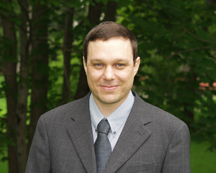Avi Loeb

Abraham (Avi) Loeb is an American/Israeli theoretical physicist who works on astrophysics and cosmology. He is currently a professor of astronomy and the director of the Institute for Theory and Computation (ITC)[1] at Harvard University. Loeb was born in Israel in 1962 and took part in the national Talpiot program before receiving a graduate degree in Plasma Physics at age 24 from the Hebrew University in Jerusalem. Between 1988-1993, Loeb was long-term member at the Institute for Advanced Study in Princeton, where he started to work in theoretical astrophysics. In 1993 he moved to Harvard University as an assistant professor in the department of astronomy, where he was tenured three years later. Loeb was given a number of awards including the Guggenheim Fellowship in 2002. He also holds a visiting professorship at the Weizmann Institute of Science.
Loeb has worked on a broad range of research areas in astrophysics and cosmology, including the first stars, the epoch of reionization, the formation and evolution of massive black holes, gravitational lensing by planets, gamma-ray bursts(GRBs) at high redshifts, 21-cm cosmology, the use of the Lyman-alpha forest to measure the acceleration/deceleration of the universe in real time, the future collision between the Milky-Way and Andromeda galaxies, the future state of extragalactic astronomy, astrophysical implications of black hole recoil in galaxy mergers, and imaging black hole silhouettes. Some of his papers (e.g., on planet microlensing, high-redshift GRBs, and 21-cm cosmology) are considered as pioneering in areas that have become by now the focus of established communities of astrophysicists. Loeb was among the very first theorists to trigger the research frontier on the "cosmic dawn" of the first stars and galaxies. In a series of papers with his students and postdocs, he addressed how and when the first stars and black holes formed and what effects they had on the young universe.[2] He also led a team that discovered tentative evidence for the birth of a black hole in the young nearby supernova SN1979C.[3]
In 2006 Loeb was featured in a cover story of TIME magazine on the first stars and in a Scientific American article on the Dark Ages of the Universe. In 2008 Loeb was featured in a cover story of Smithsonian magazine on black holes and in two cover stories of Astronomy Magazine, one on the collision between the Milky-Way and Andromeda and the second on the future state of our Universe. In 2009, Loeb reviewed in a Scientific American article a new technique for imaging black hole silhouettes. In 2010 he wrote a new textbook entitled "How Did the First Stars and Galaxies Form?", published by Princeton University Press.[4] In the same year, Loeb wrote an influential article encouraging young researchers to be creative.[5]
External links
- Avi Loeb's home page
- Loeb's recent preprints
- Loeb's published papers
- Template:PDFlink
- Template:PDFlink
- Template:PDFlink
- Template:PDFlink
- Template:PDFlink
- Template:PDFlink
- Future Collision of the Milky Way and Andromeda
- An introductory movie to Loeb's book
